Welcome to San Ignacio! This beautiful city is home to a wide variety of birds that make this area their home. From colorful parakeets to majestic eagles, there is something for everyone to enjoy.
Whether you’re a bird enthusiast or just someone looking to take in the sights, San Ignacio is the perfect place to take in the beauty of these feathered friends. With its lush forests and open meadows, you can spot many different species of birds that call this region home.
So come explore the avian world of San Ignacio and see the magnificence of these creatures up close and personal.
1. Keel-billed Toucan
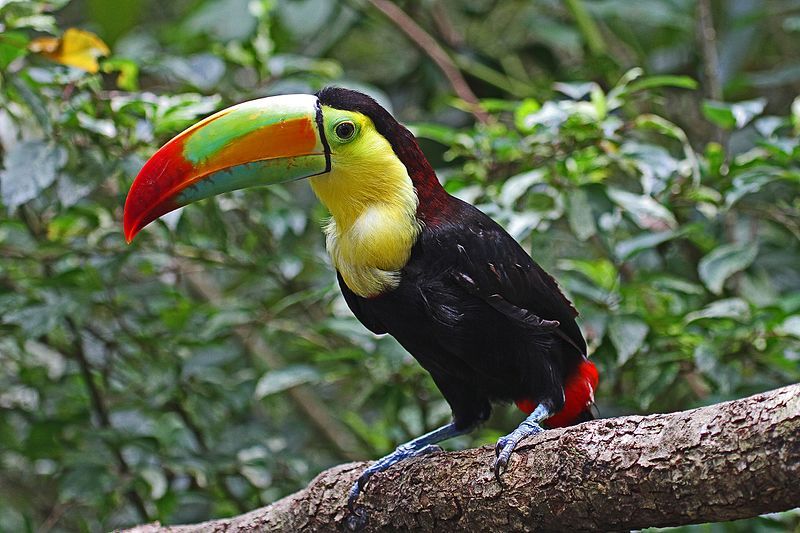
The keel-billed toucan is a distinctively colorful bird found in the tropical jungles of Central and South America. It is a member of the toucan family and is native to countries such as Mexico, Belize, and Colombia.
In Belize, it is even the national bird. The bird is also known as the sulfur-breasted toucan, the keel toucan, or the rainbow-billed toucan. Its most defining features are its large, brightly-colored bill and its distinctive squawk.
The bill is usually yellow and orange in color with black markings, while the feathers are predominantly black and yellow. The keel-billed toucan is an omnivorous bird that feeds on a variety of fruits, insects, and small vertebrates.
It is also known to steal eggs from other birds’ nests. In the wild, they live in large groups of up to 25 individuals. The keel-billed toucan is a beloved bird that has become a symbol of Belize’s natural beauty.
It is also a popular icon in the world of art, with its unique colors and features inspiring many different types of artwork.
| Kingdom | Animalia |
| Phylum | Chordata |
| Class | Aves |
| Order | Piciformes |
| Family | Ramphastidae |
| Genus | Ramphastos |
| Species | R. sulfuratus |
2. Black-headed Trogon
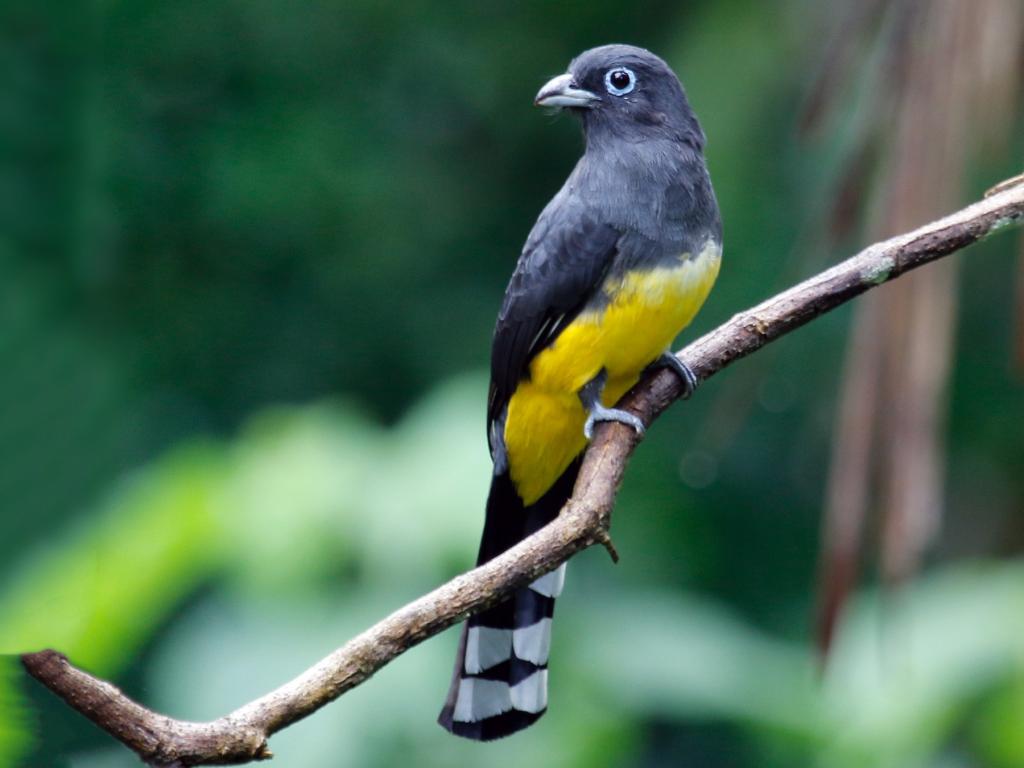
Source: ebird.org
The black-headed trogon is a species of bird that is a part of the Trogonidae family. This species of bird is native to many countries in Central America, including Belize, Costa Rica, El Salvador, Guatemala, Honduras, Mexico, and Nicaragua.
The black-headed trogon is a medium-sized bird with a black head and hood and a white throat. Its upperparts are mostly green, and its breast and belly are yellow. The back is striped with black and white, and its tail has a black tip.
This bird is typically found in humid and subtropical forests, as well as in mangroves, plantations, and other habitats. It is known for its distinctive call, which is described as a series of loud, rolling coos.
The black-headed trogon is an omnivorous species that feeds on insects, fruits, and small vertebrates. It typically nests in tree cavities, and its eggs and young are incubated and cared for by both parents.
This species is not considered to be threatened, however, it is threatened by habitat destruction and degradation.
| Kingdom | Animalia |
| Phylum | Chordata |
| Class | Aves |
| Order | Trogoniformes |
| Family | Trogonidae |
| Genus | Trogon |
| Species | T. melanocephalus |
3. Rufous-tailed Jacamar
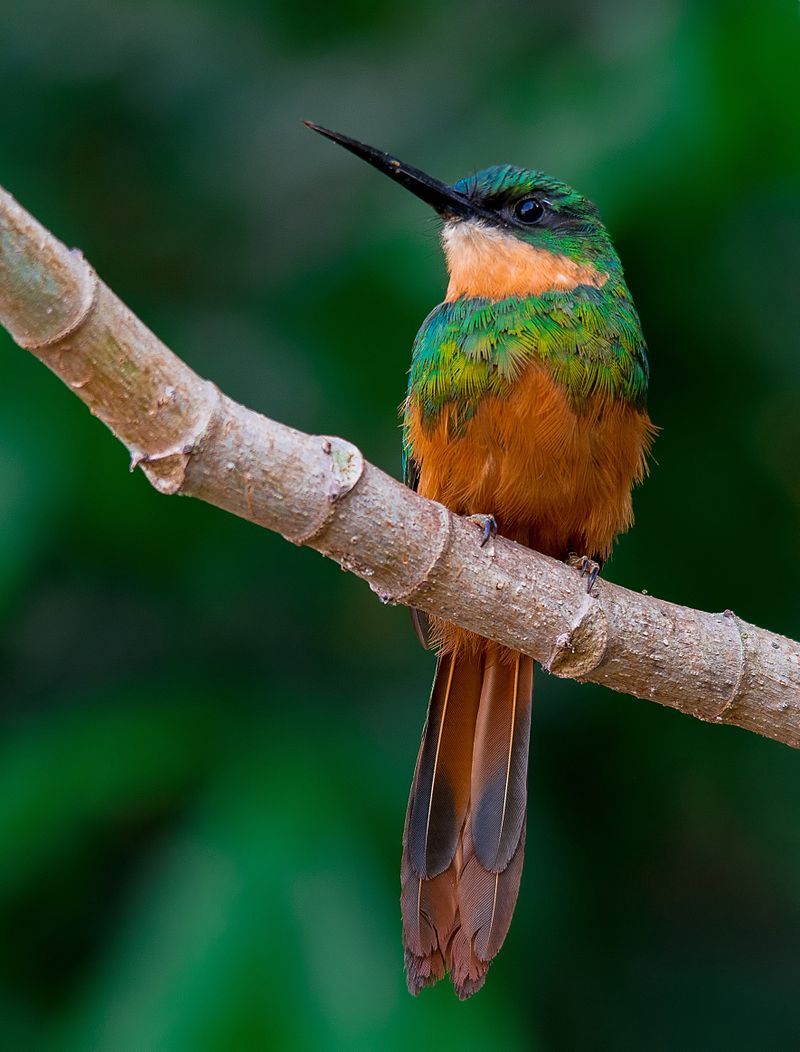
The rufous-tailed jacamar is an impressive bird species with a range that extends from Mexico to South America. It is a near-passerine bird, meaning that it belongs to a group of birds closely related to the perching birds or passerines, such as sparrows, finches, and thrushes.
This species is found in the tropical New World, ranging from southern Mexico to as far south as southern Brazil and Ecuador.
It is a tropical species, preferring to breed in moist and humid forests, as well as other wooded areas. The rufous-tailed jacamar is a medium-sized bird, measuring between 15 and 17 centimeters in length. It has a long, thin bill and a rufous-colored tail.
Its plumage is generally brown and white, with a black head and neck and a white throat. The wings and back feature a combination of light and dark browns. The rufous-tailed jacamar is an omnivore, feeding on a variety of fruits, insects, and small frogs.
They often hunt by perching on a branch and waiting for prey to come within reach. They also use their long bill to catch insects while in flight. The breeding season for the rufous-tailed jacamar takes place during the wet season in its range.
They are monogamous birds and build a cup-shaped nest out of twigs and grasses, which they line with feathers. The female lays up to three eggs, which are incubated by both parents.
The young birds fledge after about three weeks. The rufous-tailed jacamar is considered to be of least concern by the International Union for Conservation of Nature. It has a wide range and is relatively common in its habitat.
However, it faces some threats from deforestation and hunting.
| Kingdom | Animalia |
| Phylum | Chordata |
| Class | Aves |
| Order | Piciformes |
| Family | Galbulidae |
| Genus | Galbula |
| Species | G. ruficauda |
4. Blue-gray Tanager
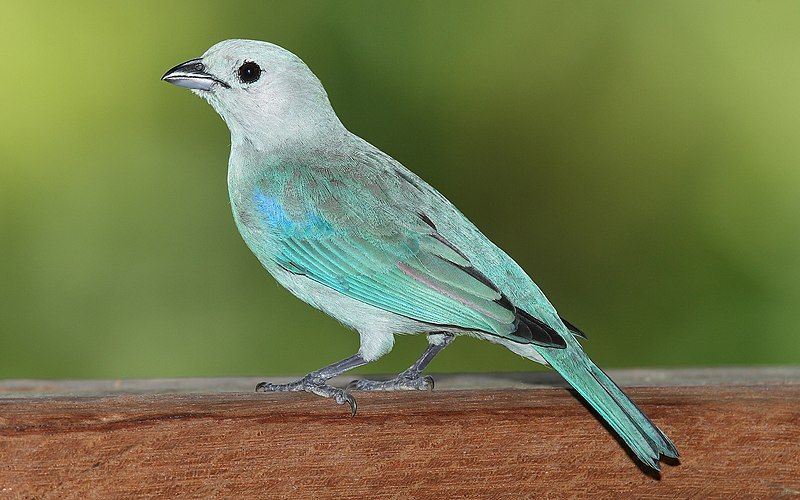
The blue-gray tanager is a species of songbird found in South America. It is a member of the tanager family, Thraupidae, and has a wide range that extends from Mexico to northern Brazil and northeast Bolivia, covering all of the Amazon Basin except for the very south.
It is unusual for this species as it has been introduced to Lima, a city in Peru. On the islands of Trinidad and Tobago, it is known as the blue jean. The blue-gray tanager is a medium-sized bird, with a body length of around 15 centimeters.
It is mostly gray in color, with a bright blue head, throat, and wings. Its beak is black and its legs are yellow. It feeds mainly on insects, but will also eat fruit and seeds. Its call is a series of buzzy whistles.
| Kingdom | Animalia |
| Phylum | Chordata |
| Class | Aves |
| Order | Passeriformes |
| Family | Thraupidae |
| Genus | Thraupis |
| Species | T. episcopus |
5. Lineated Woodpecker
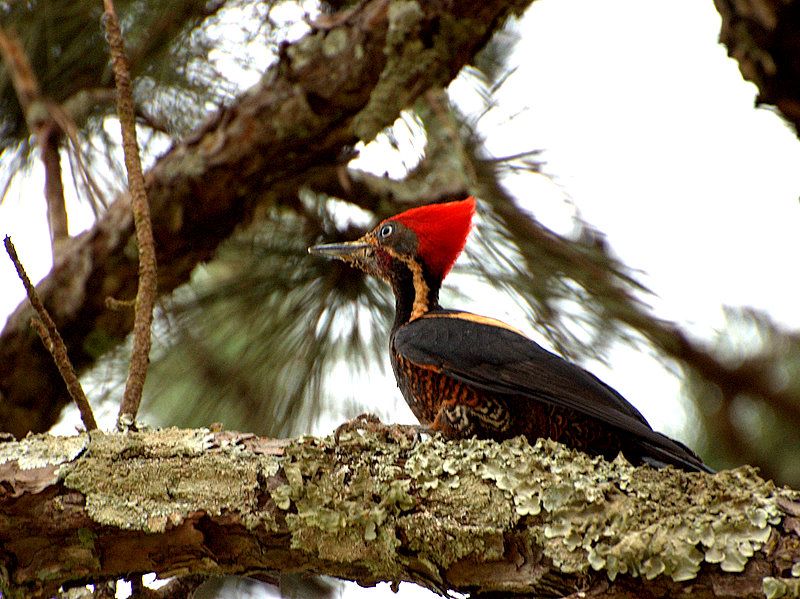
The Lineated Woodpecker is a species of bird renowned for its size. It is found across Central and South America, from southern Mexico to northern Argentina, and even on Trinidad Island in the Caribbean.
This species is a resident breeder, meaning that it lives in the same area all year round and nests in the same area for multiple years. The Lineated Woodpecker is a large bird, measuring up to 16 inches in length.
Its plumage is black and white, with a pattern of black and white lines running along its wings, back, and tail. The underparts of this bird are white, and it has a large, red patch on the back of its neck.
Additionally, both males and females have distinctive red crests on their heads. The Lineated Woodpecker mainly feeds on insects, which it obtains by hammering at tree bark. It also feeds on fruits and nuts and occasionally eats small reptiles and amphibians.
This species is an important part of the ecosystem, as it helps to control insect populations and disperse the seeds of trees and other plants. The Lineated Woodpecker is a widespread and abundant species, and its population is not considered to be threatened.
In fact, it is currently listed as a species of least concern by the International Union for Conservation of Nature.
| Kingdom | Animalia |
| Phylum | Chordata |
| Class | Aves |
| Order | Piciformes |
| Family | Picidae |
| Genus | Dryocopus |
| Species | D. lineatus |
6. Lesson’s Motmot
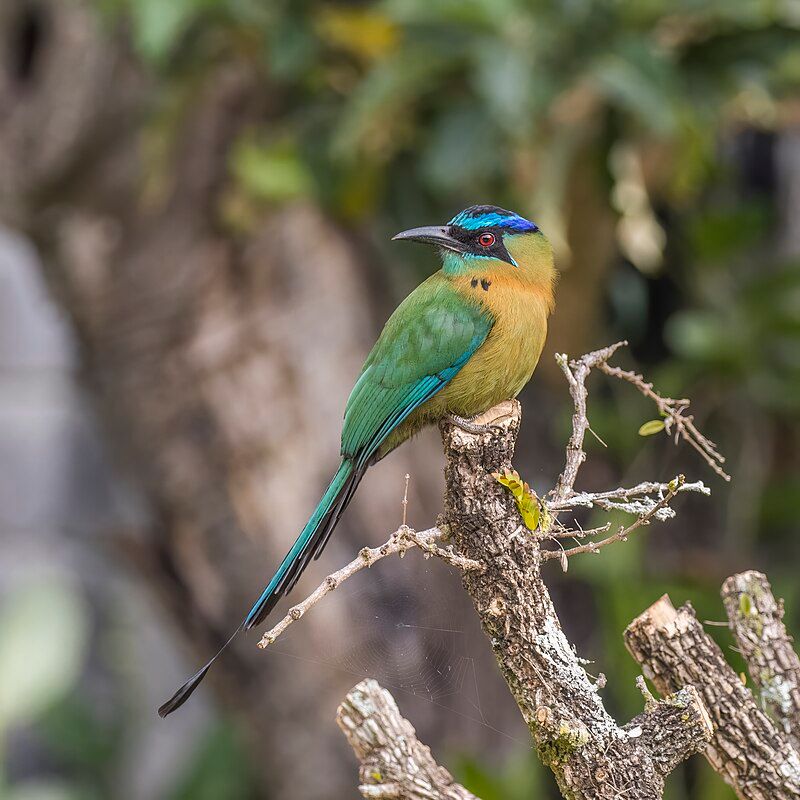
The Lesson’s Motmot is a stunning bird found in the forests and woodlands of southern Mexico to western Panama. It has a bright blue diadem on its head, which makes it a rather unique species.
This species, along with five other species of motmots, was previously considered to be the same species. These other species include the blue-capped, whooping, Trinidad, Amazonian, and Andean motmots.
Each of these species has its own distinct features, such as the blue-capped motmot having a blue cap on its head and the Amazonian motmot having a greenish-brown body.
Despite the differences, all these species of motmots are closely related and are now considered to be separate species.
| Kingdom | Animalia |
| Phylum | Chordata |
| Class | Aves |
| Order | Coraciiformes |
| Family | Momotidae |
| Genus | Momotus |
| Species | M. lessonii |
7. Motmot
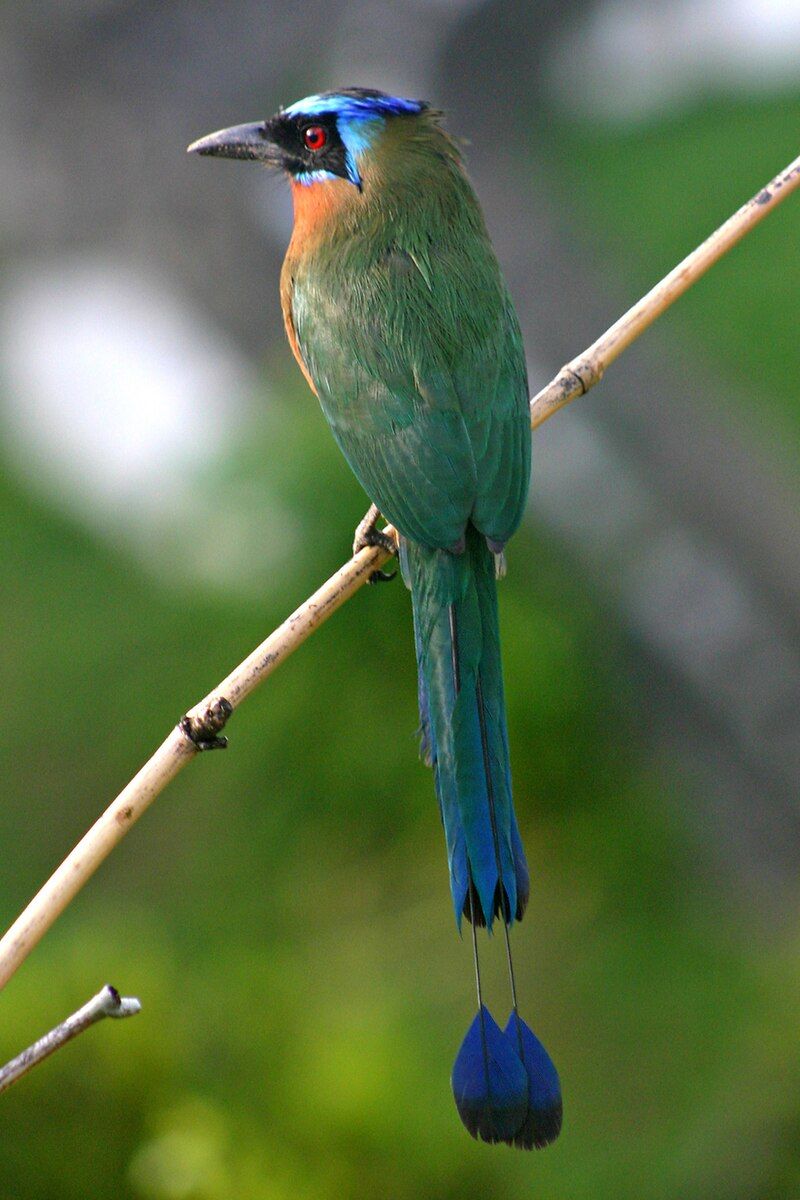
The Motmots, also known as Momotidae, are a family of birds belonging to the Coraciiformes, which is an order of birds including the Kingfishers, Bee-Eaters, and Rollers.
These birds are native to the Neotropics, an area of the Americas made up of Central and South America, as well as the Caribbean. Motmots are typically found in woodlands or forests, and the largest species of Motmot are found in Central America.
Motmots are known for their vibrant and colorful plumage, as well as their relatively large bills.
| Kingdom | Animalia |
| Phylum | Chordata |
| Class | Aves |
| Order | Coraciiformes |
| Family | Momotidae |
8. Masked Tityra
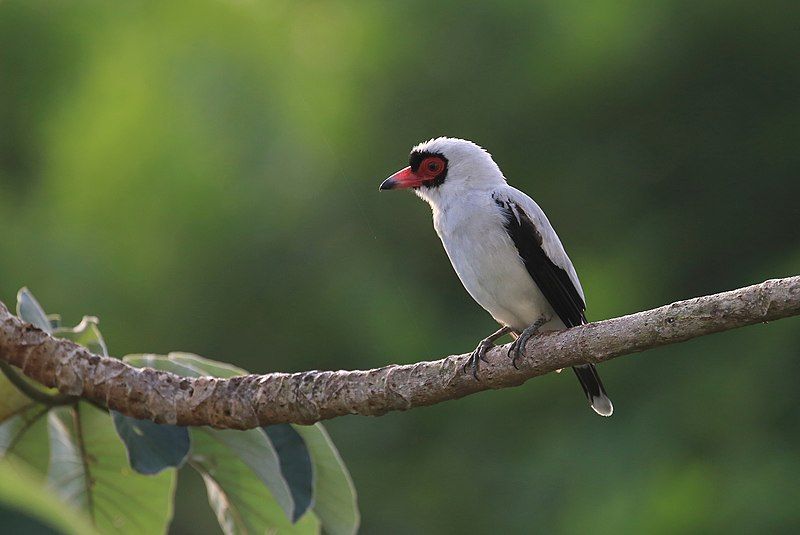
The masked tityra is a type of passerine bird, also known as a perching bird, which is medium-sized. It has been traditionally classified as belonging to either the cotinga or the tyrant flycatcher family.
However, recent evidence has suggested that it is more accurately placed in the Tityridae family. This is a family of passerine birds that are found in Central and South America.
The South American Classification Committee has now accepted this evidence and has placed the masked tityra in the Tityridae family. This is an important development as it provides a more accurate representation of the bird’s classification.
It also helps to ensure that the bird is correctly classified and identified for future studies.
| Kingdom | Animalia |
| Phylum | Chordata |
| Class | Aves |
| Order | Passeriformes |
| Family | Tityridae |
| Genus | Tityra |
| Species | T. semifasciata |
9. Lesser Yellow-headed Vulture
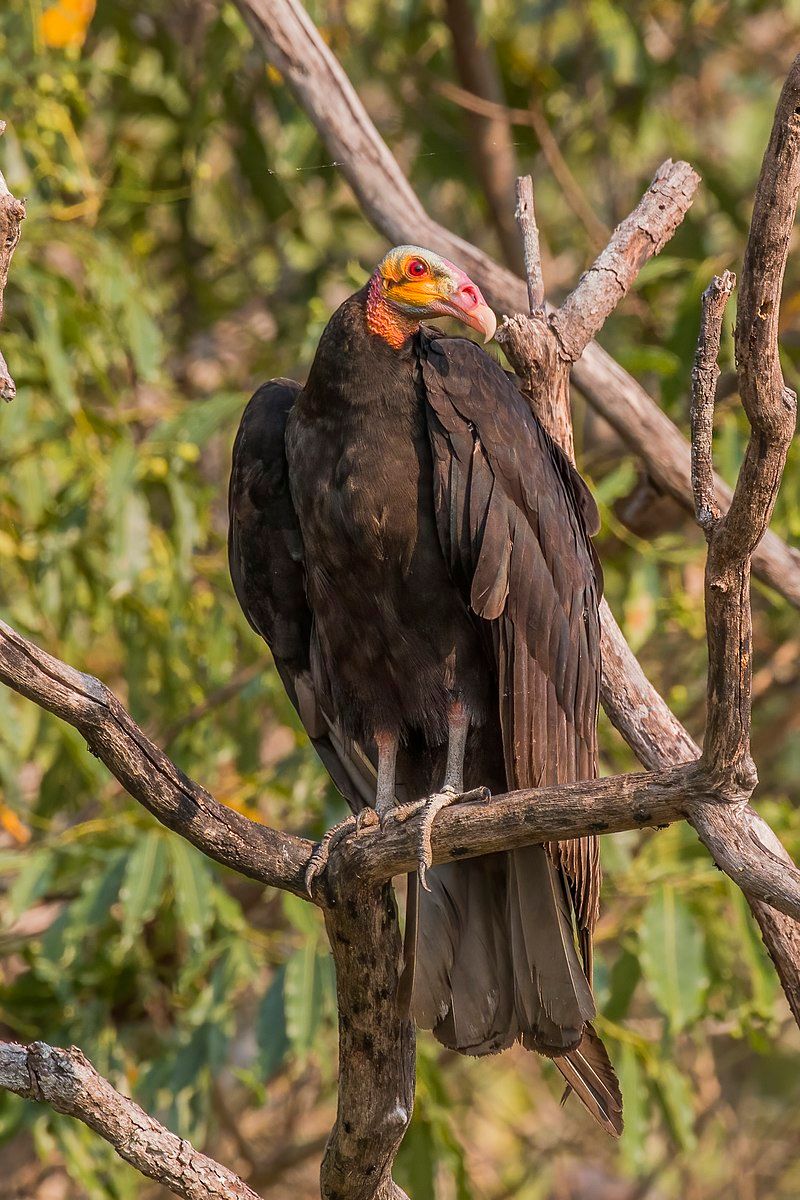
The lesser yellow-headed vulture is a species of bird found in the New World vulture family Cathartidae. This species of bird has two common names: the lesser yellow-headed vulture and the savannah vulture.
It was once thought to be the same species as the greater yellow-headed vulture, but they were split into two species in 1964. The lesser yellow-headed vulture is found in Central and South America, including Mexico, Guatemala, Nicaragua, Costa Rica, Panama, Colombia, Venezuela, Brazil, Ecuador, Peru, Bolivia, and Argentina.
They are usually found in tropical and subtropical open habitats, such as savannahs, woodlands, and grasslands.
This species of vulture is typically seen in large flocks, and it feeds mostly on carrion. The lesser yellow-headed vulture has a black body with a yellowish-orange head. Its wingspan is up to 4 feet, and it is typically 18 to 22 inches in length.
This species of vulture is listed as near threatened by the IUCN Red List of Threatened Species, due to habitat loss and the use of pesticides and other toxins. Conservation efforts are underway to help protect this species and its habitat.
| Kingdom | Animalia |
| Phylum | Chordata |
| Class | Aves |
| Order | Accipitriformes |
| Family | Cathartidae |
| Genus | Cathartes |
| Species | C. burrovianus |
10. Orange-chinned Parakeet
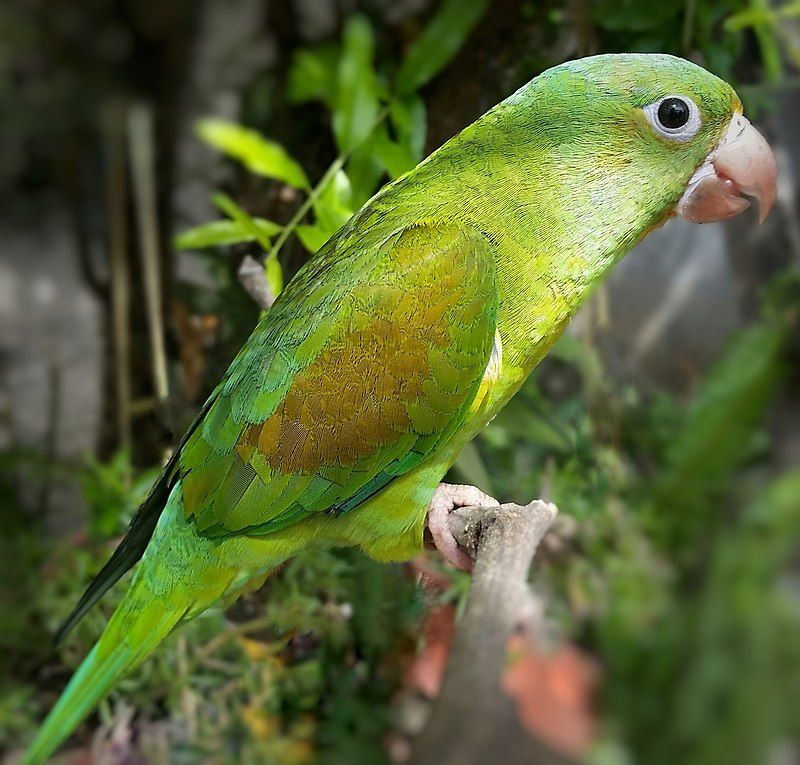
The orange-chinned parakeet, also known as the Tovi parakeet, is a species of bird in the subfamily Arinae belonging to the family Psittacidae. Psittacidae is a family of birds that includes African and New World parrots.
This species of parakeet is found in a wide range of habitats from southern Mexico, through Central America, to Colombia and Venezuela. It is a colorful and attractive bird, with a distinctive orange-colored chin and a bright green body.
It has a strong beak and a long tail that help it to maneuver through dense vegetation. This species of parakeet is generally found in small groups in the trees of tropical forests and woodlands, where it feeds on fruits, nuts, and seeds.
It is also known to eat other small invertebrates, such as insects and spiders. The orange-chinned parakeet is an important species in its ecosystem, as it helps to spread the seeds of the plants it feeds on.
It is considered to be a relatively common species but is threatened by habitat destruction and poaching.
| Kingdom | Animalia |
| Phylum | Chordata |
| Class | Aves |
| Order | Psittaciformes |
| Family | Psittacidae |
| Genus | Brotogeris |
| Species | B. jugularis |
11. Fiery-billed Aracari
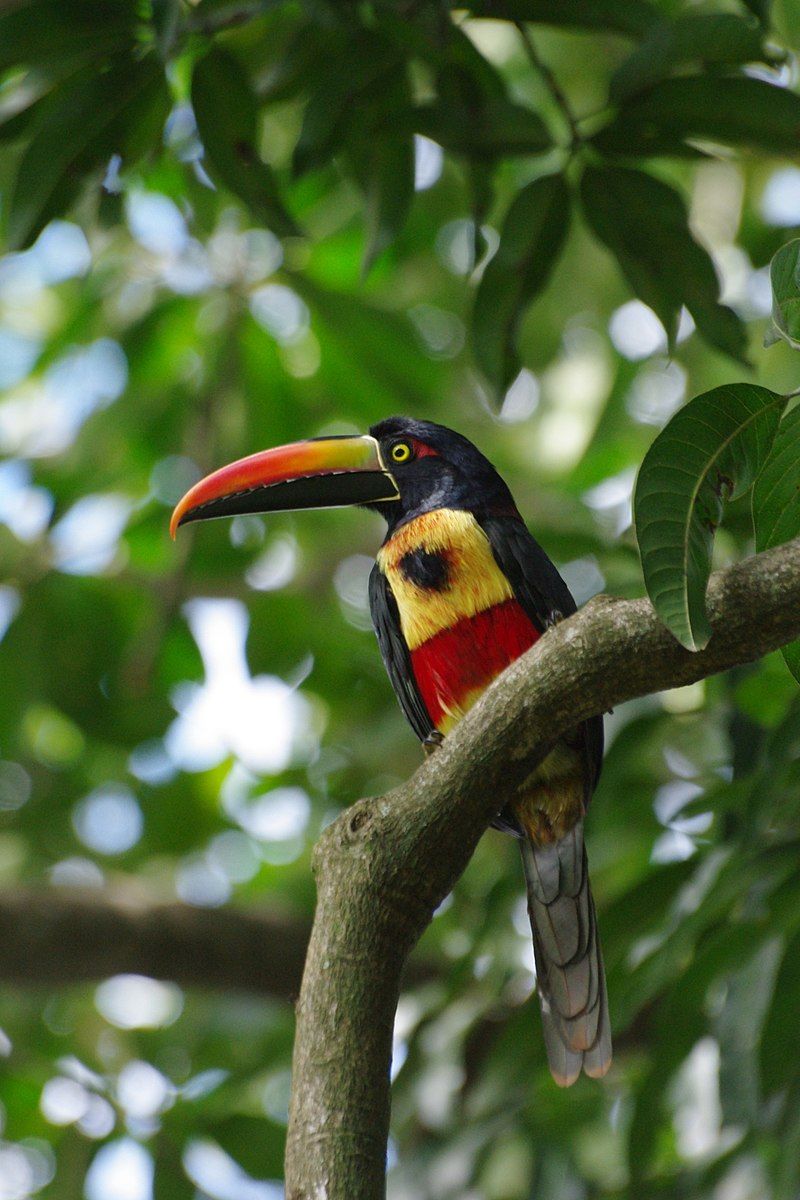
The Fiery-billed Aracari, also known as the Fiery-billed Araçari, is a unique bird belonging to the Ramphastidae family of toucans. It is native to two countries in Central America – Costa Rica and Panama.
This bird is quite small compared to other members of its family and is classified as a near-passerine bird, which means that it is close to the passerine species found in the area. The most striking feature of the Fiery-billed Aracari is its beak, which is bright red and has a striped pattern.
This pattern is composed of black and yellow stripes, and the beak is quite long and curved. The length of the beak is almost the same as the length of the body. The body of this bird is covered in black feathers, while its belly is white.
The eyes are black with a yellow circle around them. In the wild, this bird can be found in humid lowland forests and in areas with high elevations. It is an omnivore and feeds on fruits, insects, and small vertebrates.
It is quite active during the day and often joins other bird species in small flocks. It is a noisy bird and makes a variety of sounds, including whistles and chirps. The Fiery-billed Aracari is considered to be a vulnerable species due to its decreasing population.
The main threats to its population are habitat loss and degradation due to agricultural practices, logging, and mining activities. Conservation efforts are needed to ensure the survival of this unique bird species.
| Kingdom | Animalia |
| Phylum | Chordata |
| Class | Aves |
| Order | Piciformes |
| Family | Ramphastidae |
| Genus | Pteroglossus |
| Species | P. frantzii |
12. Hoffmann’s Woodpecker
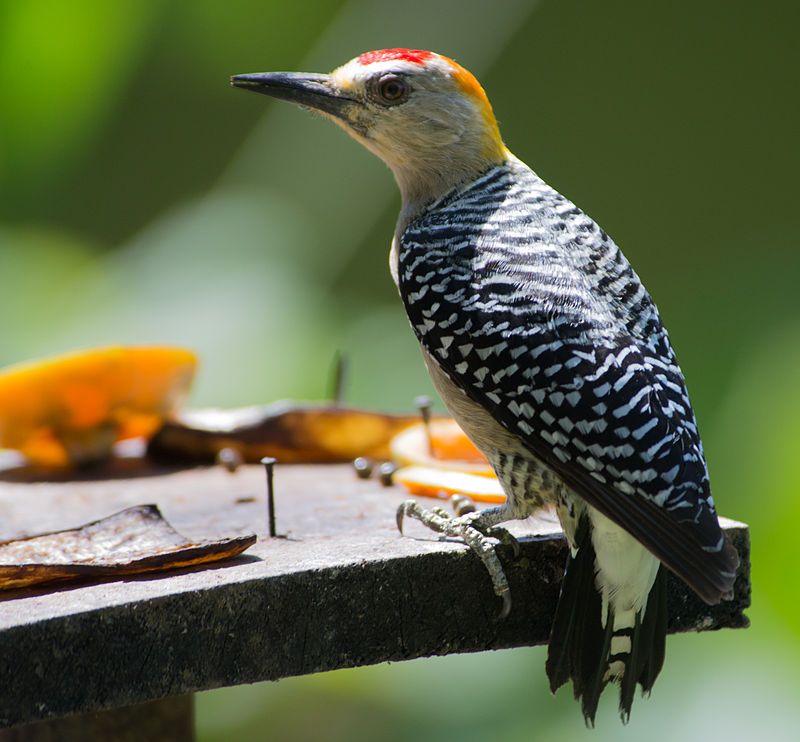
Hoffmann’s woodpecker is a species of bird that is part of the Picidae family, which belongs to the Picinae subfamily. This species is native to Central America and is found in the countries of Honduras and Costa Rica.
It is thought to inhabit the tropical rainforests and lowland foothills of these two countries, where it spends much of its time foraging for food in the trees.
These birds have a distinctive appearance, which includes a red crest on top of their heads and a black and white patterned body. They have a short, sharp beak, which they use to peck at wood in order to find insects and larvae for food.
Hoffmann’s woodpeckers are known to be quite vocal, and can often be heard making loud calls throughout the day.
| Kingdom | Animalia |
| Phylum | Chordata |
| Class | Aves |
| Order | Piciformes |
| Family | Picidae |
| Genus | Melanerpes |
| Species | M. hoffmannii |
13. Blue-vented Hummingbird

Source: ebird.org
The blue-vented hummingbird is a species of hummingbird that belongs to the Trochilini tribe. This tribe is part of the subfamily Trochilinae, which is also known as the emeralds. The hummingbird has a range that covers Costa Rica and Nicaragua.
This species is a small bird, typically growing to a length of around 8 centimeters. Its back and wings are a deep, iridescent blue while its underside is white or light gray. The throat is white with a blue streak, which is very prominent in males.
The bill of the blue-vented hummingbird is black, thin, and slightly curved. Its diet consists mostly of small insects and nectar from flowers. It is an active forager, and it can hover in place while feeding on the nectar of flowers.
The blue-vented hummingbird is a common species in its range, and it is found in a variety of habitats including forests, gardens, and urban areas.
| Kingdom | Animalia |
| Phylum | Chordata |
| Class | Aves |
| Clade | Strisores |
| Order | Apodiformes |
| Family | Trochilidae |
| Genus | Saucerottia |
| Species | S. hoffmanni |
Conclusion
Birds in San Ignacio are an important part of the local ecosystem, providing natural pest control, pollinating flowers, and adding beauty and song to the area. They are a vital part of the environment and should be appreciated and protected.